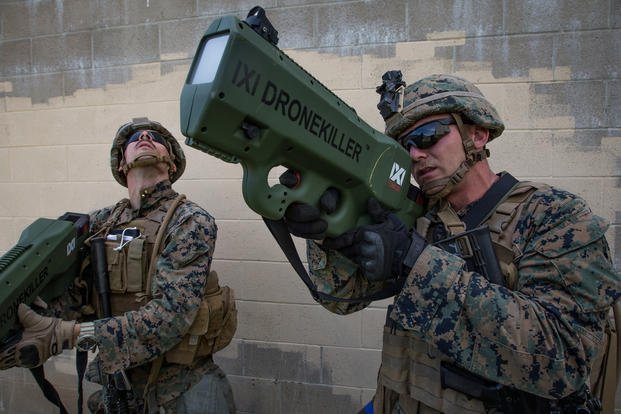After announcing the Pentagon would ramp up its counter-drone efforts in the new year, the Defense Department recently established a new office to address the growing challenge of targeting pesky and sometimes lethal enemy drones, according to a top official.
Under Secretary of Defense for Acquisition and Sustainment Ellen Lord told reporters Tuesday that the DoD has created a 60-person team, headed by a two-star Army general, that will draft policy and field systems to best take out unmanned systems that pose a threat to U.S. installations and facilities -- especially those abroad.
"Overall, the idea is to take all of the effort in terms of development and fielding and come up with three to five systems, which are the best for counter-UAS, and make sure we leverage those across the entire DoD," Lord said during a Defense Writers Group breakfast in Washington, D.C.
Lord, who unveiled the Pentagon's ambitions for better counter-unmanned aerial systems (C-UAS) last month, said the team should have proposals ready by April. The DoD named the U.S. Army as executive agent for counter-UAS for all the services.
"One size does not fit all," Lord said. "You need a system with multiple sensors, multiple 'defeat' systems," Lord said.
"We need defensive measures ... all the way up to group five, very large" unmanned aerial vehicles, she added. Group 5 drones include aircraft such as the MQ-9 Reaper and RQ-4 Global Hawk.
Lord said the goal is to prevent future attacks from drones, no matter their level of sophistication. For example, swarms of drones helped devastate Saudi Arabia's huge Abqaiq oil production facility and the nearby Al Khurais oil field on Sept. 14, initially knocking out about five million barrels per day of oil production, according to Saudi defense officials. Aramco, a state-owned oil company, operates the facility.
Lord acknowledged that there is an assortment of weapons already out there.
For the past several years, combat units have been equipped with drone-disabling systems such as Dedrone's DroneDefender, a shoulder-fired weapon that disables drones with radio waves and, when paired with an Israeli-made radar, can detect unmanned aerial vehicles from several kilometers away.
In August, the Air Force awarded Raytheon Space and Airborne Systems a $23.8 million contract for two prototype high-energy laser weapons (HELW) systems, designed to take out UAVs. The service said it expects to deploy the HELW mounted on ground-based vehicles in a few months for a year-long test.
The Air Force also gave Raytheon a $16 million contract to prototype the Phaser high-powered microwave counter-drone system, to be deployed and tested by service personnel within the same timeframe as the HELW.
In the next few months, the Pentagon hopes to test more "comprehensive systems" in the field, Lord said.
"It's just a variety of different types," she said. "And what we're trying to do is standardize to a degree on systems that have a range of capabilities."
Editor's note: This story has been updated to reflect that Dedrone now manufactures the DroneDefender.

No comments:
Post a Comment